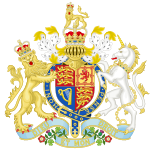- Constitutions of Clarendon
-
The Constitutions of Clarendon were a set of legislative procedures passed by Henry II of England in 1164. The Constitutions were composed of 16 articles and represent an attempt to restrict ecclesiastical privileges and curb the power of the Church courts and the extent of Papal authority in England. In the anarchic conditions of Henry II's predecessor, Stephen, the church had extended its jurisdiction in the void. The Constitutions were claimed to restore the judicial customs observed during the reign of Henry I (1100–35), while in fact they were a part of Henry II's larger expansion of royal jurisdiction into the Church and civil law, which was the defining aspect of his reign.
The Constitutions' primary goal was to deal with the controversial issue of "criminous clerks," or clergy who had committed a serious crime but escaped justice via ecclesiastical courts by "benefit of Clergy". Unlike royal courts, ecclesiastical courts were more sympathetic to clergy. An ecclesiastical case of murder often ended with the defendant being defrocked (dismissed from the priesthood). In a royal court, murder was often punished with mutilation or death.
The Constitutions of Clarendon were Henry II's attempts to rein in the "problem" (and conveniently increase his own power at the same time) by claiming that once the ecclesiastical courts had tried and defrocked clergymen, the Church could no longer protect the individual, and convicted former clergy could be further punished under the jurisdiction of secular courts.
It was formerly supposed that Henry wanted all clerks accused of crimes to be tried in the King's Courts. But this impression, as Frederic William Maitland showed (Roman Canon Law, pp. 132-147), is certainly wrong. A rather complicated arrangement was proposed by which cognizance of the case was first to be taken in the King's Court.
If the culprit proved to be a clerk, the case was to be tried in the ecclesiastical court, but an officer of the King's Court was to be present. The officer, if the accused was found guilty, was to conduct him back to the King's Court after degradation, where he would be dealt with as an ordinary criminal and adequately punished.
The king's contention was that flogging, fines, degradation, and excommunication, beyond which the spiritual courts could not go, were insufficient as punishment. The archbishop urged that, apart from the principle of clerical privilege, to degrade a man first and to hang him afterwards was to punish him twice for the same offense. Once degraded, he lost all his rights, and if he committed another crime, he might then be punished with death like any other felon.
Also, "the forces at the back of St. Thomas represented not only the respect which men feel for a bold fight for principle, but also that blind struggle against the hideous punishments of the age, of which the assertion of ecclesiastical privilege, covering widows and orphans as well as clerks and those that injured them, was a natural expression" (W. H. Hutton in "Social England", I, 394).
Thomas Becket, the Archbishop of Canterbury (1162–1170), resisted the Constitutions, especially the clause concerning "criminous clerks." As a result, Henry exiled Becket and his family. Bishops were in agreement over the articles until the Pope disapproved and then Becket repudiated his arguments. The controversy resulted, becoming so bitter that Becket was murdered on 29 December 1170. After this Henry felt compelled to revoke the two controversial clauses which went against canon law. However, the rest stayed in effect as law of the land.
The Constitutions take their name from Clarendon Palace, Wiltshire, the royal hunting lodge at which they were promulgated.
External links
- Medieval Sourcebook: Constitutions of Clarendon, 1164
- The Avalon Project at Yale Law School: Constitutions of Clarendon
 United Kingdom legislation
United Kingdom legislationPre-Parliamentary legislation Acts of Parliament by states preceding
the Kingdom of Great BritainActs of the Parliament of England to 1483 · 1485–1601 · 1603–1641 · Interregnum (1642–1660) · 1660–1699 · 1700–1706
Acts of the Parliament of Scotland
Acts of the Parliament of Ireland to 1700 · 1701–1800Acts of Parliament of the
Kingdom of Great Britain1707–1719 · 1720–1739 · 1740–1759 · 1760–1779 · 1780–1800
Acts of Parliament of the United Kingdom of
Great Britain and Ireland and the United
Kingdom of Great Britain and Northern IrelandChurch of England Measures Legislation of devolved institutions Acts of the Scottish Parliament
Acts and Measures of the Welsh Assembly
Acts of the Northern Ireland Assembly / of the Northern Ireland Parliament
Orders in Council for Northern IrelandSecondary legislation Categories:- Feudalism in England
- 1164 in law
- 1164 in England
- 12th century in England
- English laws
Wikimedia Foundation. 2010.

